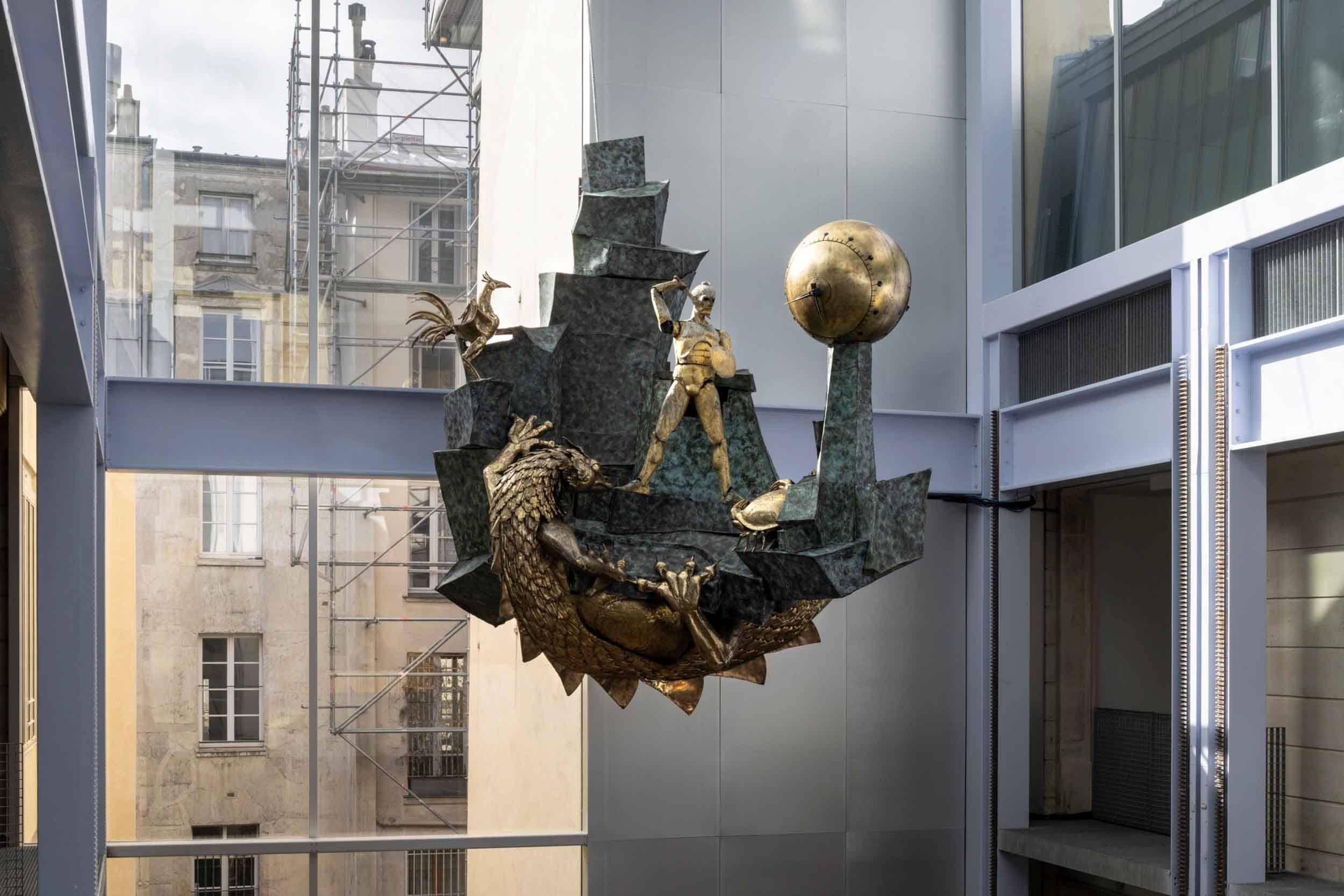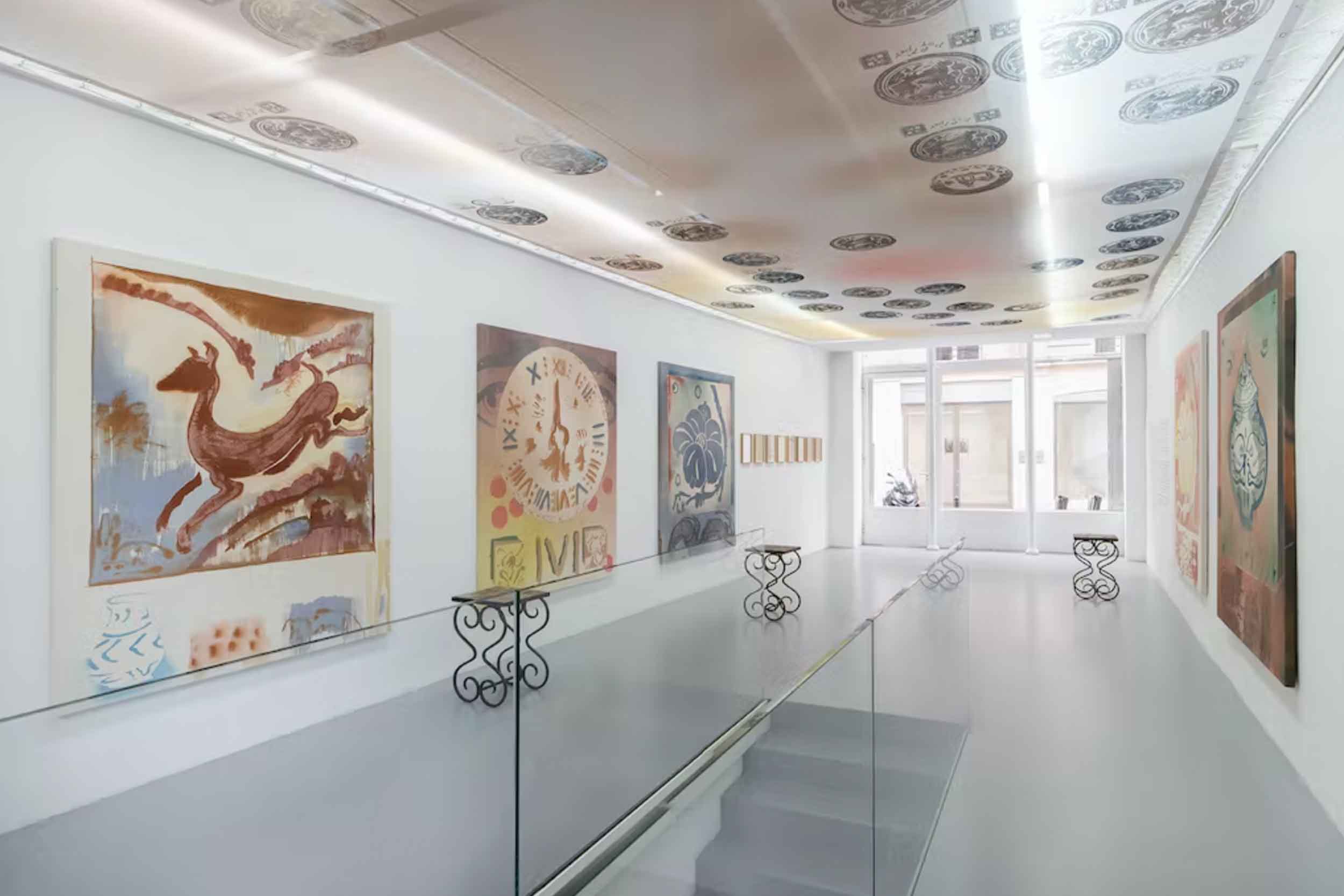
Cyprien Gaillard at Lafayette Anticipations
Oct 17, 2022 — Jan 8, 2023
Here’s one to add to your French phrasebook: Le temps file – time flies. Cyprien Gaillard’s latest work centers on an automaton clock that has been installed in Paris since 1979 but defunct since 2003. The clock will be restored and installed back in its original location at the end of the exhibition. This action is a metaphor for how humans are locked in a constant struggle against our own ticking hours – fighting to rid traces of ruin and decay. The show, titled Humpty / Dumpty, takes place across two venues: the exhibition space of the Galeries Lafayette, where you’ll find the clock itself, and the Palais de Tokyo, where a diverse collection of pieces by several artists tackle time-related issues involving bodies, war, and the environment.



